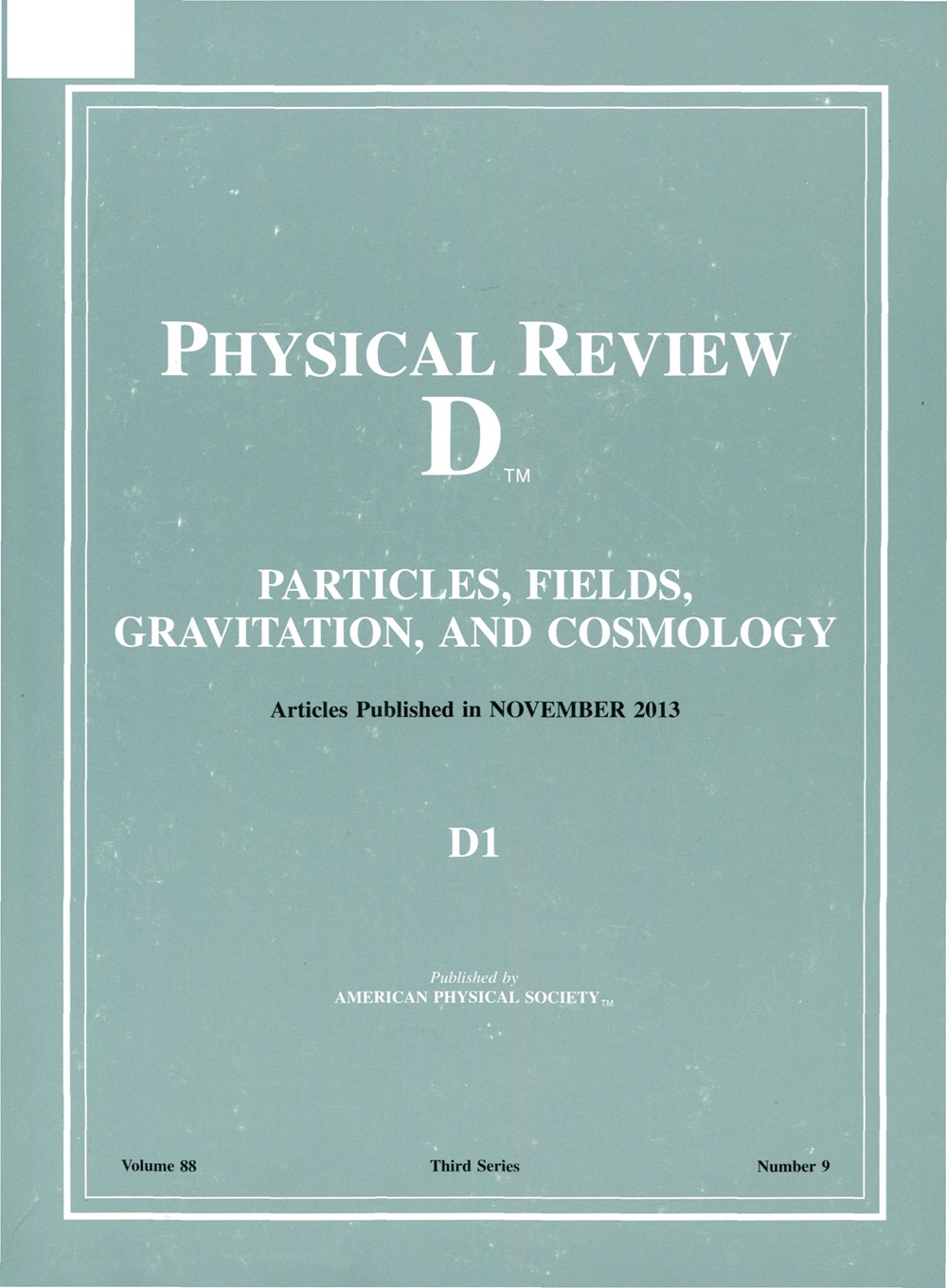Probing right-handed neutrinos via trilepton signals at the HL-LHC
IF 5.3
2区 物理与天体物理
Q1 Physics and Astronomy
引用次数: 0
Abstract
Neutrino oscillation experiments have provided direct evidence for the existence of neutrino masses. The seesaw mechanism explains the smallness of these masses through the introduction of heavy right-handed neutrino (RHN) states. The RHN states can also generate Dirac neutrino masses at tree or loop level. These heavy states can exist at the electroweak scale, approximately in the O(GeV) range, and can be investigated through current and future collider experiments. This scenario, where other new physics interactions occur at scales much higher than the RHN scale, can be described using an effective field theory (EFT) framework known as在HL-LHC上通过三重子信号探测右手中微子
中微子振荡实验为中微子质量的存在提供了直接证据。跷跷板机制通过引入重右手中微子(RHN)状态来解释这些质量的小。RHN态也可以产生树级或环级的狄拉克中微子质量。这些重态可以存在于电弱尺度,大约在0 (GeV)范围内,并且可以通过当前和未来的对撞机实验来研究。在这种情况下,其他新的物理相互作用发生在远高于RHN尺度的尺度上,可以使用称为NR-EFT的有效场论(EFT)框架来描述。本文的研究重点是限制NR-EFT算子的Wilson系数,这是导致LHC三重子产生和能量信号缺失的主要原因。我们研究了RHN质量MN小于和大于W玻色子质量MW的两种情况,并为LHC的高亮度运行提供了预测。2025年由美国物理学会出版
本文章由计算机程序翻译,如有差异,请以英文原文为准。
求助全文
约1分钟内获得全文
求助全文
来源期刊

Physical Review D
物理-天文与天体物理
CiteScore
9.20
自引率
36.00%
发文量
0
审稿时长
2 months
期刊介绍:
Physical Review D (PRD) is a leading journal in elementary particle physics, field theory, gravitation, and cosmology and is one of the top-cited journals in high-energy physics.
PRD covers experimental and theoretical results in all aspects of particle physics, field theory, gravitation and cosmology, including:
Particle physics experiments,
Electroweak interactions,
Strong interactions,
Lattice field theories, lattice QCD,
Beyond the standard model physics,
Phenomenological aspects of field theory, general methods,
Gravity, cosmology, cosmic rays,
Astrophysics and astroparticle physics,
General relativity,
Formal aspects of field theory, field theory in curved space,
String theory, quantum gravity, gauge/gravity duality.
 求助内容:
求助内容: 应助结果提醒方式:
应助结果提醒方式:


